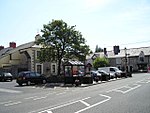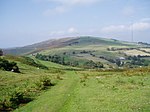Caerwys Tufa
CaerwysSites of Special Scientific Interest in ClwydUnited Kingdom Site of Special Scientific Interest stubsUse British English from July 2022
Caerwys Tufa is a Site of Special Scientific Interest in the preserved county of Clwyd, north Wales. Tufa, a very soft limestone that was once used to make cement, and later, widely used in alpine gardens, was extracted at Caerwys Tufa Quarry.
Excerpt from the Wikipedia article Caerwys Tufa (License: CC BY-SA 3.0, Authors).Caerwys Tufa
A541,
Geographical coordinates (GPS) Address Nearby Places Show on map
Geographical coordinates (GPS)
| Latitude | Longitude |
|---|---|
| N 53.236894 ° | E -3.3067675 ° |
Address
A541
CH7 5AB , Caerwys
Wales, United Kingdom
Open on Google Maps










